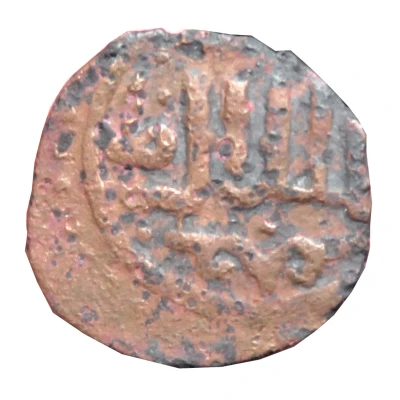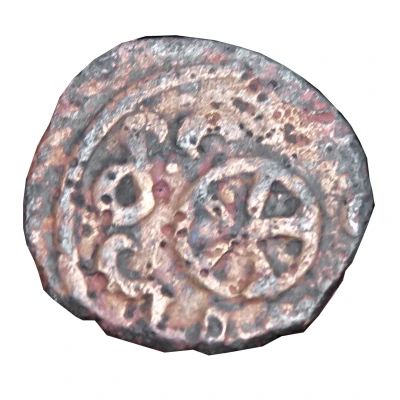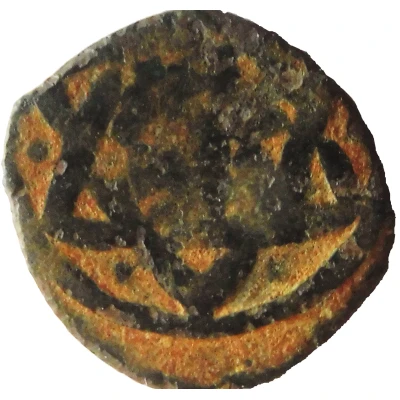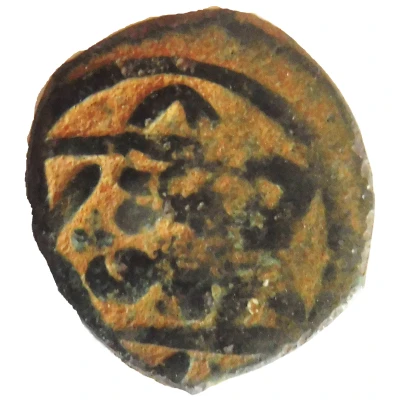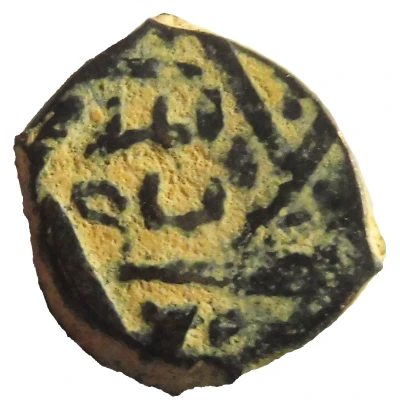
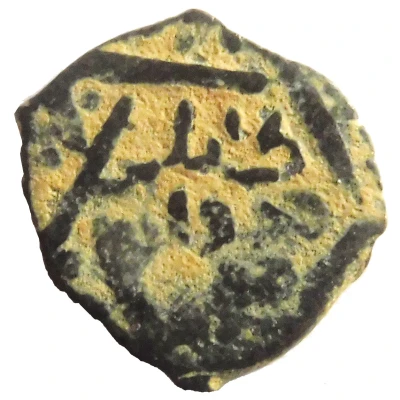

© Cycnos (CC BY-NC)
Fals - al-Nāṣir Muhammad I Trablus
741 (1341) year| Copper | 2.25 g | 19 mm |
| Issuer | Mamluk Sultanate |
|---|---|
| Sultan | Muhammad I (1293-1294, 1299-1309, 1310-1341) |
| Type | Standard circulation coin |
| Year | 741 (1341) |
| Calendar | Islamic (Hijri) |
| Value | 1 Fals (1⁄60) |
| Currency | Dinar (1250-1517) |
| Composition | Copper |
| Weight | 2.25 g |
| Diameter | 19 mm |
| Shape | Round (irregular) |
| Technique | Hammered |
| Demonetized | Yes |
| Updated | 2024-10-05 |
| Numista | N#142377 |
|---|---|
| Rarity index | 94% |
Reverse
Inscriptions on three lines comprising the name of the workshop followed by the date in all letters in a hexagram formed by two intertwined triangles, spade heads, and inscribed in the same circle; a globule between each ray of this star, presence of a grenetis.
Script: Arabic
Lettering:
طرابلس
احدوار
بعين
Translation:
Tarabulus
Ihda wa arba'in:
"[Struck at] Tripoli, [in the year seven hundred] forty-one [of the Hijrah]".
Comment
First reign (1293-1294)Second reign (1299-1309)
Third reign (1310-1341)
Two variants listed for this coin:
a) Name of the sultan inscribed on two lines, number "one" written "Hd".
b) Name of the sultan inscribed on three lines, number "one" written "Ihd".
Interesting fact
One interesting fact about the Fals coin is that it was used as a form of currency during the Mamluk Sultanate, which was a powerful Islamic empire that ruled over much of the Middle East and North Africa during the 13th to 16th centuries. The coin features an inscription in Arabic that includes the name of the ruler, al-Nāṣir Muhammad I, and the year of minting, 741 AH (1341 AD). Despite being made of copper, which is a relatively inexpensive metal, the coin was still considered valuable during its time and was used for everyday transactions. Today, it is a rare and valuable collector's item for numismatists interested in Islamic history and culture.
